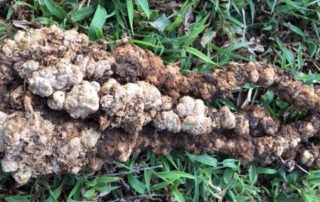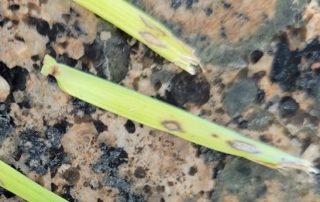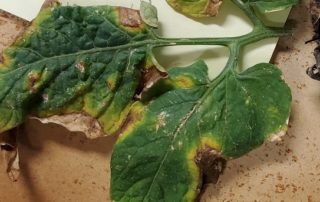Root Knot Nematodes
Root Knot Nematodes (Meloidogyne spp.) are parasitic microscopic worm-like animals that infest plant roots and interfere with the uptake of water and nutrients. Infected plants will appear stunted, they may wilt on hot days even though soil is moist, they may have chlorotic or light green leaves and usually have reduced yields. The roots will have "knots" on them where the nematode has entered the plant, and the "knots" do not come off easily, as can be seen on this nematode infested potato. [...]












